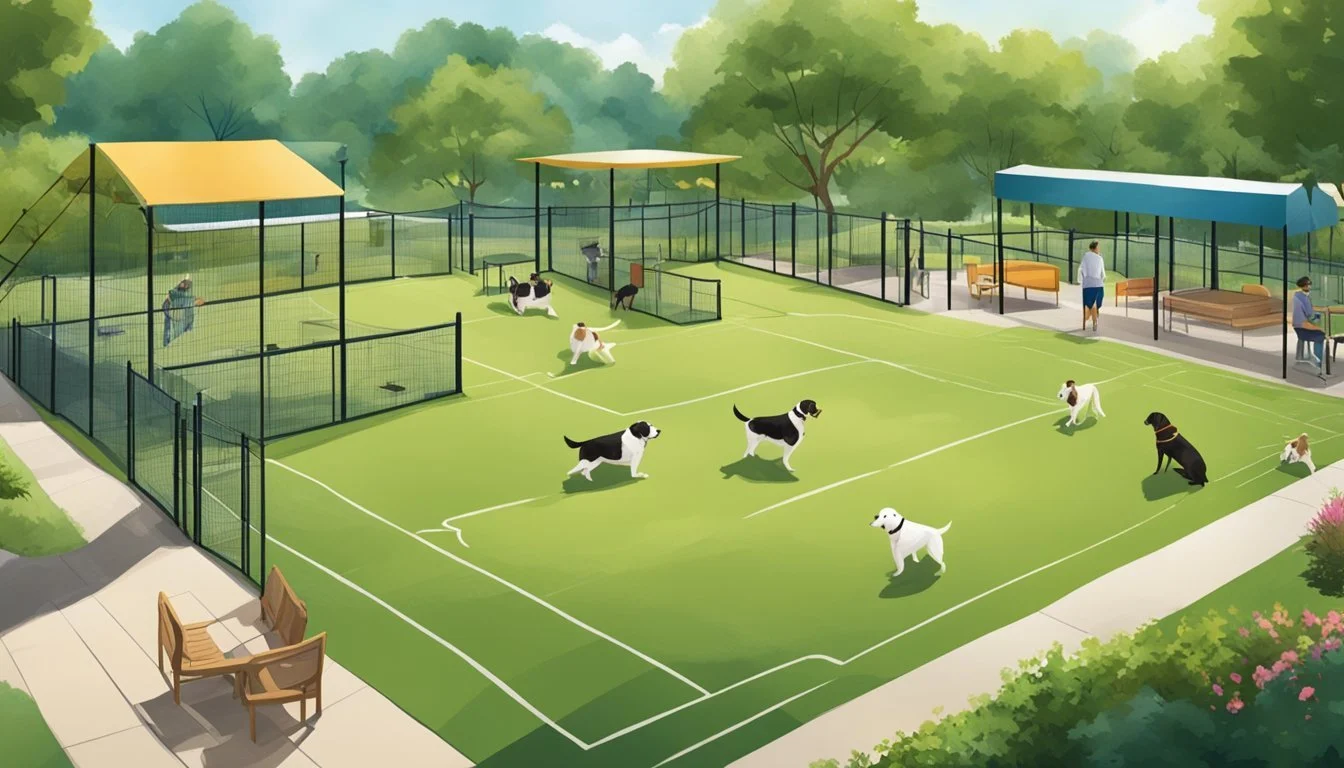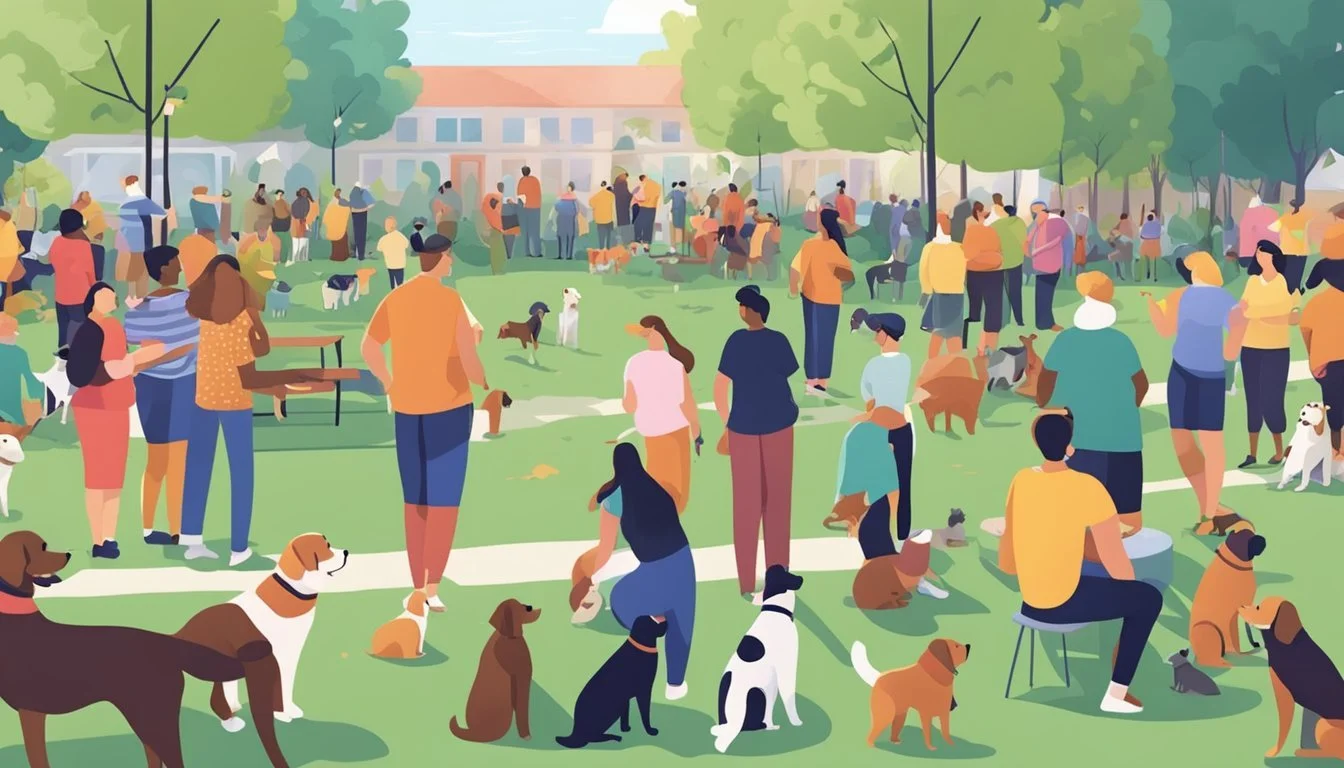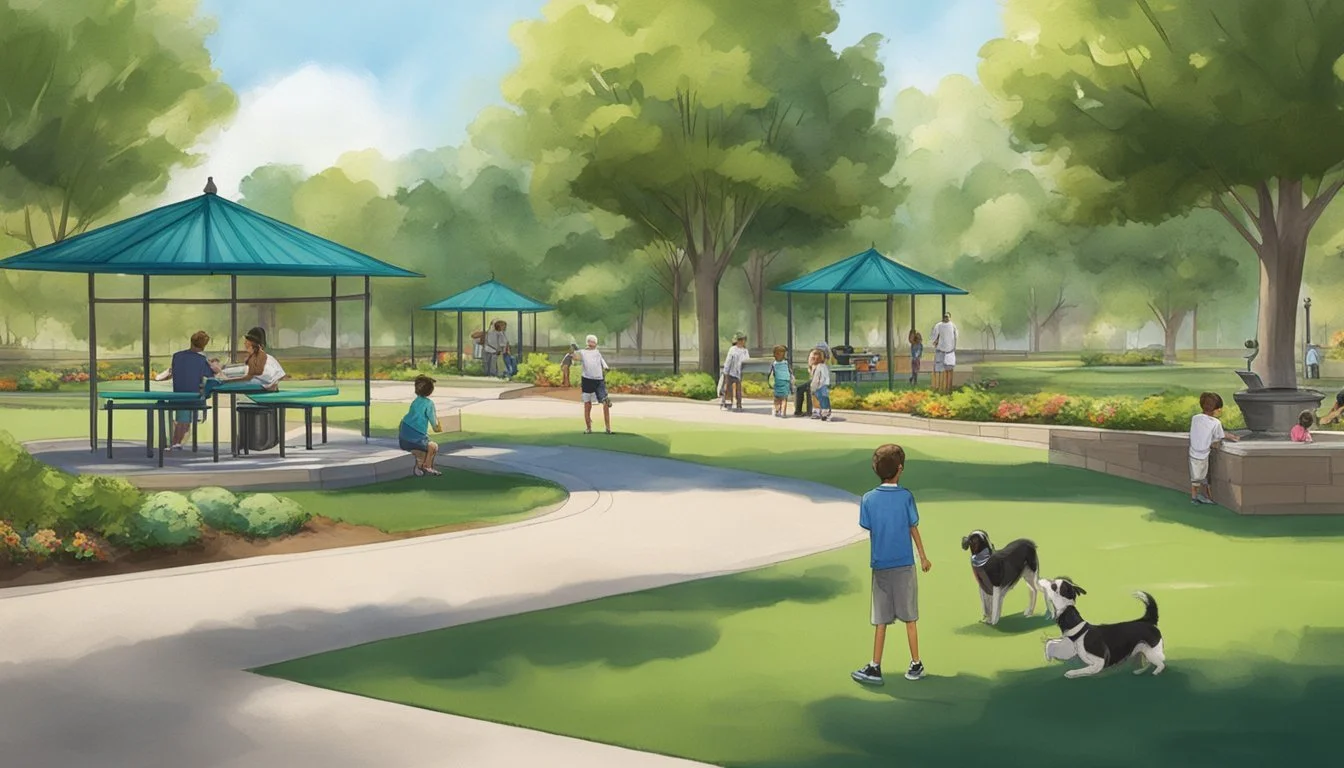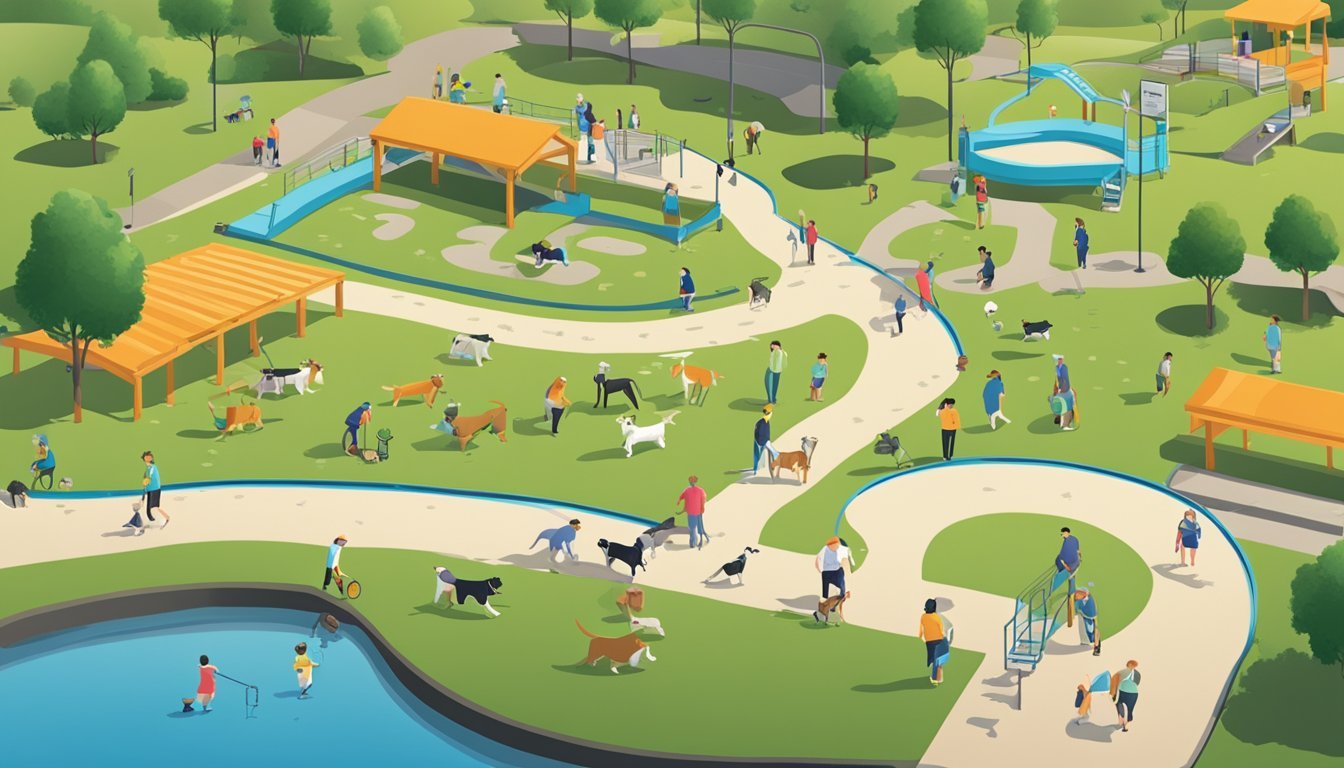Free Land for Dog Parks
Enhancing Community Pet Spaces
Free Land for Dog Parks: Creating Pet-Friendly Spaces
Communities across the country are recognizing the importance of creating pet-friendly spaces, particularly through the allocation of free land for dog parks. By dedicating areas specifically for dogs to exercise and socialize, cities can enrich the lives of both pets and their owners. Quality dog parks offer safe spaces for dogs to roam and play off-leash while bringing community members together.
The benefits of dog parks extend beyond the four-legged visitors. They foster a sense of community, encouraging social interaction among dog owners and promoting physical activity. With thoughtful design—including features such as fencing, staged entrance areas, and pet amenities—dog parks can become a central hub for community engagement.
Investing in dog parks does not only benefit pet owners but can also increase the value of residential properties nearby. As more cities embrace the concept of inclusive, pet-friendly environments, the creation of well-designed dog parks on free land can serve as a model for enhancing urban living spaces.
The Importance of Dog Parks
Dog parks provide numerous benefits for both pets and their owners. They encourage physical activity and social interaction, while also promoting responsible pet ownership.
Promoting Exercise and Socialization
Dog parks are essential for promoting exercise among dogs. They offer off-leash areas where dogs can run, jump, and play. This physical activity helps in maintaining a dog’s physical health and weight management.
Socialization is another key aspect. Dogs interact with other dogs and people, which is crucial for puppies during their developmental stages. Socialized dogs often exhibit better behavior and lower levels of aggression.
Pet owners benefit too. They connect with other dog lovers in the community, fostering a sense of camaraderie. Additionally, dog parks can include amenities like water features and agility ramps to make exercise more enjoyable.
Fostering Responsible Pet Ownership
Dog parks encourage responsible pet ownership. They often require that dogs be up-to-date on vaccinations and free of aggressive behavior before entering. This ensures a safer environment for all.
Maintaining a clean space is another responsibility instilled in dog owners. Most parks provide stations with poop bags and waste bins, promoting cleanliness and environmental responsibility.
Moreover, dog parks provide a space to practice off-leash training. This helps in building trust and improving obedience. In essence, responsible pet ownership extends beyond the home and into the community, creating more educated and mindful dog owners.
Planning and Development
Creating a successful dog park requires careful planning and thoughtful design to ensure spaces are safe, clean, and comfortable for dogs and their owners. Important factors include location, size, safety, and community engagement.
Selecting the Ideal Location
Choosing the right location for a dog park is critical. It must be accessible to the community with ample parking and easy access for pedestrians. The site should be large enough to accommodate separate areas for small and large dogs, which enhances safety and comfort.
It's vital to consider the environment. Selecting a location with natural shade, such as trees, or designing artificial shade structures will keep both dogs and people comfortable. Proximity to residential areas helps in creating an inclusive community space, though careful planning must mitigate any noise concerns for nearby residents.
Safety is a primary concern; therefore, elevated terrain that ensures proper drainage helps keep the area dry and clean. Engaging with the community to gather input on location preferences and specific needs can significantly enhance the site selection process.
Designing for Dogs and People
Designing for both dogs and people ensures the park is user-friendly and enjoyable. Essential amenities include fences that are at least five feet high to prevent escape, and staged entrances to encourage safe interactions.
Incorporating features like agility equipment, such as ramps and platforms of varying heights, provides exercise and enjoyment for dogs. Water stations and dog-drinking areas are necessary to keep dogs hydrated, especially in warm climates.
Comfort for owners is equally important. Seating areas with benches strategically placed under shade create pleasant spaces for people to relax. Providing waste stations with bags and bins encourages cleanliness and makes maintenance easier.
Creating pathways and accessible routes ensures people of all abilities can enjoy the park, while ensuring children's safety by positioning dog areas away from playgrounds or having clear demarcation lines.
Community Involvement and Support
Ensuring the success of free land dog parks hinges on active community participation and collaboration with local stakeholders. Strong community engagement and strategic partnerships can greatly enhance support and resources for these projects.
Engaging Community and Local Businesses
Community engagement is vital. Residents should be involved in the planning process through public meetings, surveys, and forums. Transparent communication helps build trust and ensures that park designs meet community needs.
Local businesses can play a key role as sponsors. Shops and companies support park initiatives financially or through in-kind donations. Sponsorship packages can offer businesses advertising opportunities, helping them build goodwill while generating revenue for park development.
Businesses providing pet services (grooming, veterinary, pet stores) especially benefit. Partnerships with these enterprises can bring additional resources and promotional support.
Advocacy and Public Partnerships
Advocacy groups and public partnerships drive momentum. Organizations like the Trust for Public Land and local parks and recreation agencies often lead advocacy efforts. They influence policy changes and secure funding for pet-friendly spaces.
Community members who actively participate in advocacy campaigns can amplify support. Utilizing social media and other platforms, they can rally public opinion and encourage donations.
Moreover, collaboration with park and recreation departments can facilitate land acquisition and maintenance. Joint initiatives between public agencies and community advocacy groups ensure long-term sustainability and improvement of dog parks.
Effective community involvement and backing from local businesses and advocacy groups are essential elements in creating and maintaining vibrant, pet-friendly spaces.
Design and Amenities
Dog parks must be designed to create safe, engaging environments for dogs and their owners. Essential amenities need to be included to ensure the area is user-friendly and meets the needs of pets and people.
Creating Engaging and Safe Spaces
A well-designed dog park includes various features to ensure both fun and safety. Fencing around the perimeter, ideally five feet high, is crucial to prevent dogs from escaping. A double gate system for the entrance adds an extra layer of security.
Shade is important, whether from natural sources like trees or constructed shelters. This prevents dogs and their owners from overheating, especially on hot days. Features like ramps, platforms, and agility equipment provide physical and mental stimulation, making the park enjoyable for dogs of all energy levels.
Seating such as benches and picnic tables should be placed throughout the park, allowing owners to relax while keeping an eye on their pets. Including a small pond or water feature can also be beneficial for dogs to cool off.
Inclusion of Essential Facilities
Water stations are essential, ensuring that dogs stay hydrated while they play. Misters could be added to cool pets and owners, enhancing the comfort level during warmer months.
Effective waste management systems, such as pet waste stations and regular maintenance schedules, keep the park clean and hygienic. Clear signage and posted rules help users understand park policies and promote respectful use.
A well-planned entrance area with a double gate system not only enhances safety but also helps manage the flow of dogs entering and exiting the park. This reduces the chances of dogs escaping or crowded situations that can lead to conflicts.
Maintenance and Improvement
To ensure dog parks remain inviting and safe, regular maintenance and continuous improvement are essential. This involves keeping the area clean and addressing safety concerns, as well as incorporating community feedback for upgrades.
Ensuring Cleanliness and Safety
Maintaining cleanliness and safety in a dog park is crucial.
Regular maintenance routines must include daily removal of pet waste and litter. Proper waste disposal stations can help encourage responsible pet ownership and reduce the spread of disease.
Safety measures also require inspecting fences, gates, and play equipment regularly. Identifying and repairing any damaged or worn-out areas can prevent accidents and conflicts.
Green spaces should be mowed and landscaped to deter pests and ticks, which are a threat to both dogs and owners. Furthermore, ensuring water features and drinking fountains are clean and functioning prevents contamination and encourages hydration.
Upgrades and Community Feedback
Upgrading a dog park should reflect community engagement and feedback.
Community surveys and suggestion boxes can gather valuable input on desired improvements. People who use the park frequently offer the best insights into what works and what doesn’t.
Common upgrades include adding more shade structures, seating, and varied terrain for exercise. Enhancements like agility equipment and water play areas can boost the park's appeal.
Feedback loops ensure owners feel heard and involved. Transparent updates on planned improvements can build a sense of ownership and responsibility among park users, fostering a cooperative effort in maintaining the park’s standards.
Regulations and Etiquette
Ensuring a harmonious experience in dog parks involves adhering to important regulations and practicing good behavior. Familiarizing oneself with these guidelines fosters a safe and enjoyable environment for all users.
Understanding Rules and Regulations
Dog park visitors must observe all posted rules and regulations to maintain order. Common rules include mandatory leash use until inside the designated area. Vaccinations are often required to prevent disease outbreaks; owners should carry proof of their pet's health status.
Signage plays a crucial role in communicating park policies. Dogs may need to be at least four months old and well-socialized. Aggressive behavior is typically prohibited. Owners are responsible for their pets' actions and should always clean up after them to keep the park clean.
Promoting Good Behavior
Practicing good etiquette ensures everyone enjoys their time. Dog owners should observe their pets closely to intervene if necessary. Engaging in responsible pet ownership means preventing unwanted behaviors like excessive barking or rough play.
Owners can foster a respectful atmosphere by being courteous to others, sharing space, and not monopolizing any area. It's also important to be aware of fellow park visitors who might feel uncomfortable around certain breeds or dog sizes. Maintaining open communication with other owners helps prevent conflicts and encourages a friendly community.
Inclusion and Accessibility
Creating pet-friendly spaces that are inclusive and accessible ensures that all members of the community, including those with special needs and different sized dogs, can enjoy a safe and welcoming environment.
Creating Spaces for All
Inclusivity starts with designing parks that cater to both large and small dogs. Separate areas designated for different-sized dogs can help prevent accidents and ensure all pets feel comfortable. Additionally, having shaded areas and benches can enhance the comfort of pet owners, making these spaces more inviting.
Creating accessible paths for those with mobility issues is crucial. Wheelchair-accessible routes and low-gradient slopes allow everyone to navigate the park with ease. Pet parks should also have water stations and waste disposal units distributed throughout the area to maintain hygiene and convenience.
Accommodating Special Needs
Special needs of pets and owners must be addressed to ensure true inclusivity. For pets with disabilities, fenced sections with ramps and soft ground surfaces can provide a safer environment for play. It's also helpful to have quiet zones for pets that may be anxious or easily overwhelmed.
For pet owners with disabilities, parks should include features such as Braille signage, accessible restrooms, and adjustable water fountains. Ensuring these facilities meets a variety of needs fosters a more inclusive community. Additionally, providing information in multiple languages can help non-native speakers feel more included and informed.
Engagement and Community Building
Engaging the community and building strong connections are crucial for the success of dog parks. Public parks need proactive measures to create an inclusive environment that involves both dog owners and non-dog owners.
Organizing Events and Activities
Organizing events at dog parks can significantly boost community engagement. Regular events such as agility courses, obedience training sessions, or celebration days for pet adoption can attract park visitors and create a lively atmosphere.
Hosting dog-friendly events provides opportunities for dog owners to socialize and share experiences. Themed activities, such as costume contests or breed meetups, can add variety and appeal. An event calendar available online and in local community centers can help keep everyone informed.
Periodic clean-up drives and volunteer days encourage community members to take ownership of the park. Initiatives like these foster a sense of belonging and pride among local residents. Workshops or seminars led by pet care professionals can further educate participants on responsible pet ownership.
Supporting the Dog Community
Support for the dog community goes beyond just providing a physical space for dogs to run. Comprehensive support includes addressing the needs and concerns of dog owners and ensuring a harmonious coexistence with other park visitors.
Creating a group of committed dog park advocates can help sustain momentum and address issues as they arise. These advocates can liaise with local authorities to secure funding, plan maintenance, and handle grievances.
Offering amenities such as water stations, waste disposal bags, and shaded areas can enhance the user experience. Clear signage outlining park rules ensures everyone understands their responsibilities.
Community support can also involve partnerships with local pet businesses for sponsorships or donations. Collaboration with animal shelters and rescues for adoption drives can turn the dog park into a hub for animal welfare efforts.
Conclusion
Pet-friendly spaces have become increasingly significant as communities recognize the value of allowing pets to engage freely within urban environments. By providing free land for dog parks, municipalities are fostering a more inclusive and vibrant community culture.
These spaces contribute positively to mental and physical health, offering opportunities for exercise and social interaction for both pets and their owners.
Dog parks and other animal-inclusive amenities also increase property values and can be a major selling point for real estate. Residents are often drawn to communities that prioritize such facilities.
A broader focus on designing pet-friendly policies and regulations ensures that these spaces are safe and enjoyable. This enhances the quality of life for all residents, promoting a harmonious living environment.
Key Benefits of Dog Parks:
Improved mental health for pet owners and pets
Increased physical activity and social interaction
Higher property values
Strengthened community bonds
By considering the diverse needs of both pet owners and non-pet owners, cities can create spaces that are beneficial for all, highlighting the importance of comprehensive urban planning.









